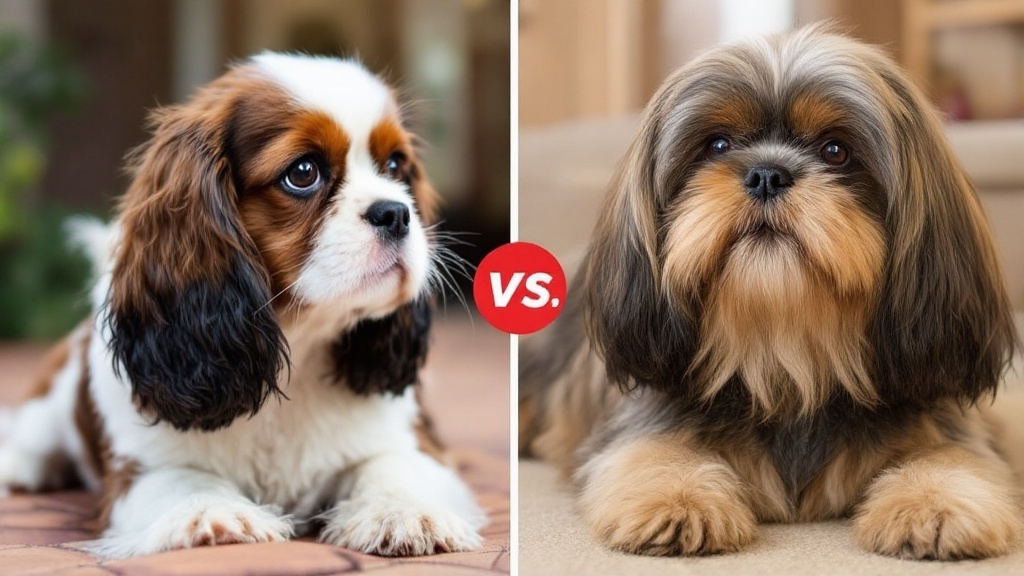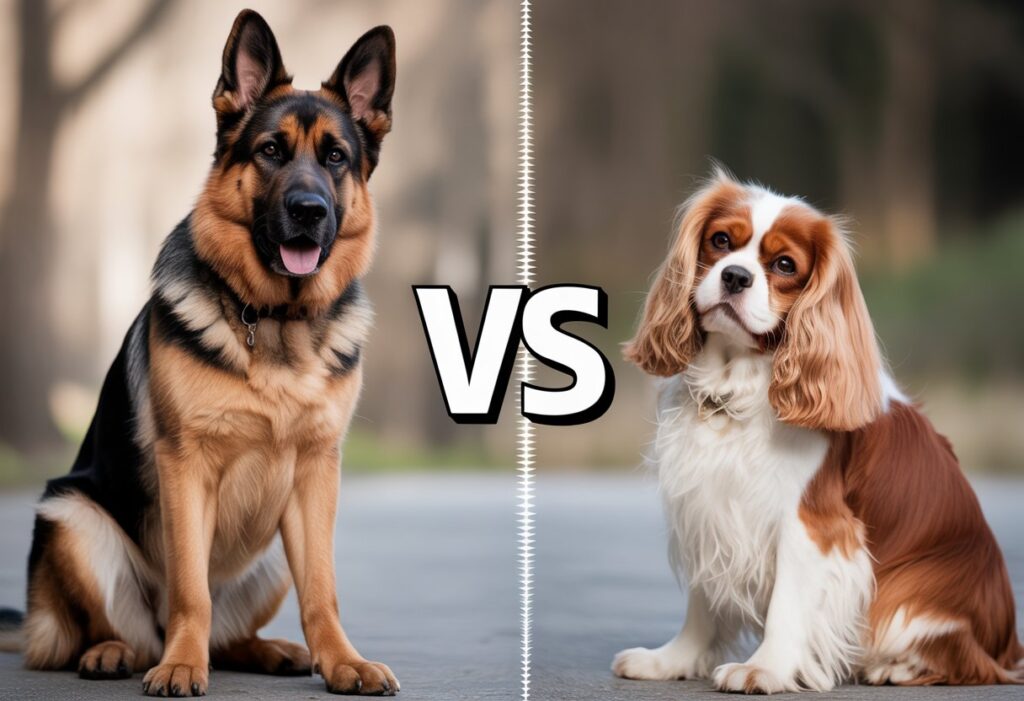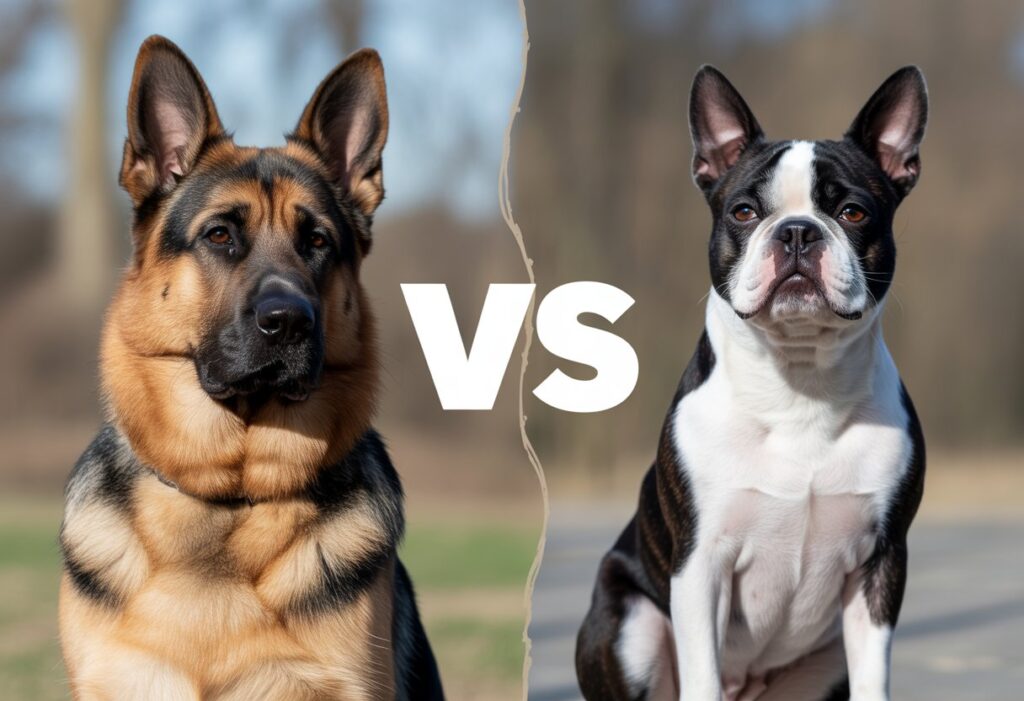Choosing between a Cavalier King Charles Spaniel and a Lhasa Apso isn’t always straightforward. Both breeds are small and make great companions, but the Cavalier usually feels more social and mellow, while the Lhasa Apso leans independent and watchful.
Knowing these differences helps you pick the right fit for your life. It’s not always obvious until you dig in.
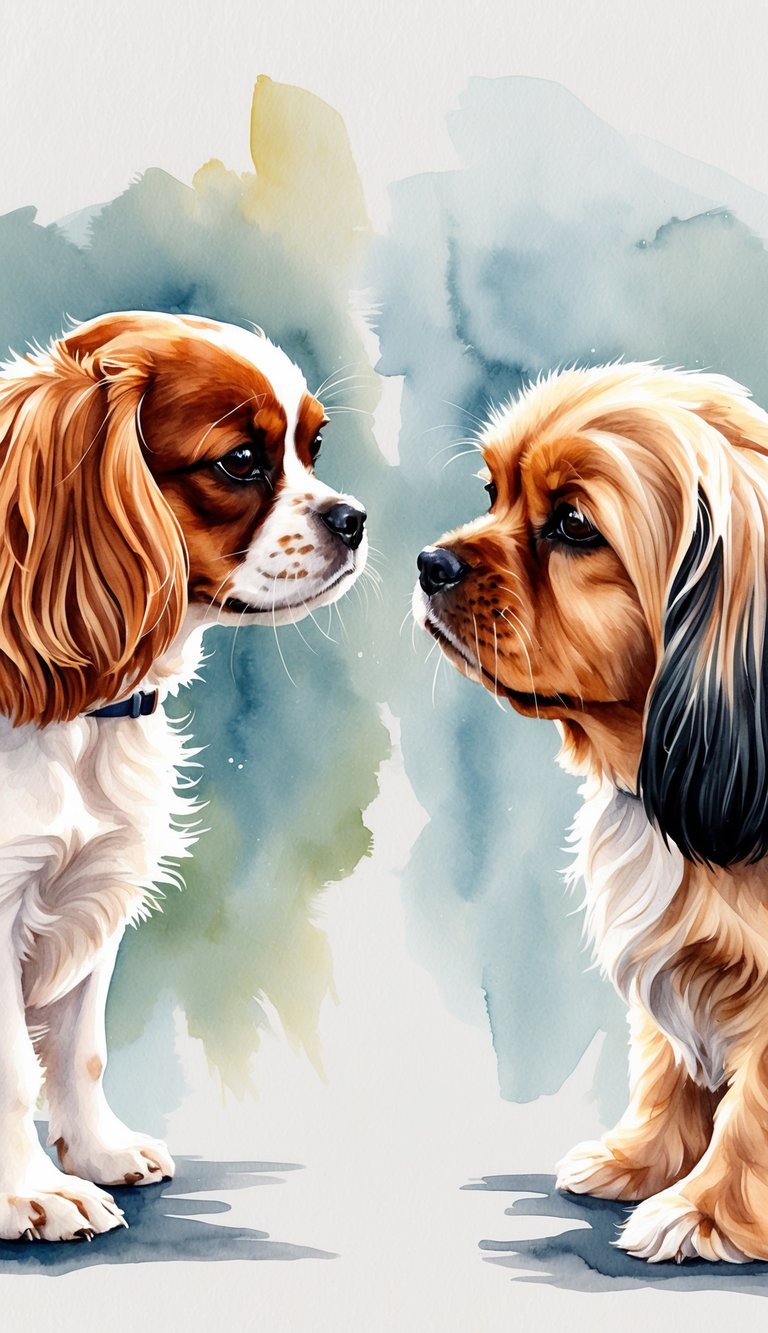
These breeds come from totally different backgrounds, which shapes how they look and act. The Cavalier has a soft, flowing coat and a friendly vibe, making it a hit with families.
The Lhasa Apso sports a thicker coat and tends to be more cautious with strangers. You might need more patience and training if you go with a Lhasa.
If you care about matching your dog to your activity level and how much grooming you’re willing to do, keep reading. You’ll see how each breed handles exercise, care, and social time.
Key Takeaways
- The Cavalier King Charles Spaniel is more social and family-friendly.
- The Lhasa Apso is more independent and needs consistent training.
- Grooming and activity needs differ between the two breeds.
Breed Origins and History
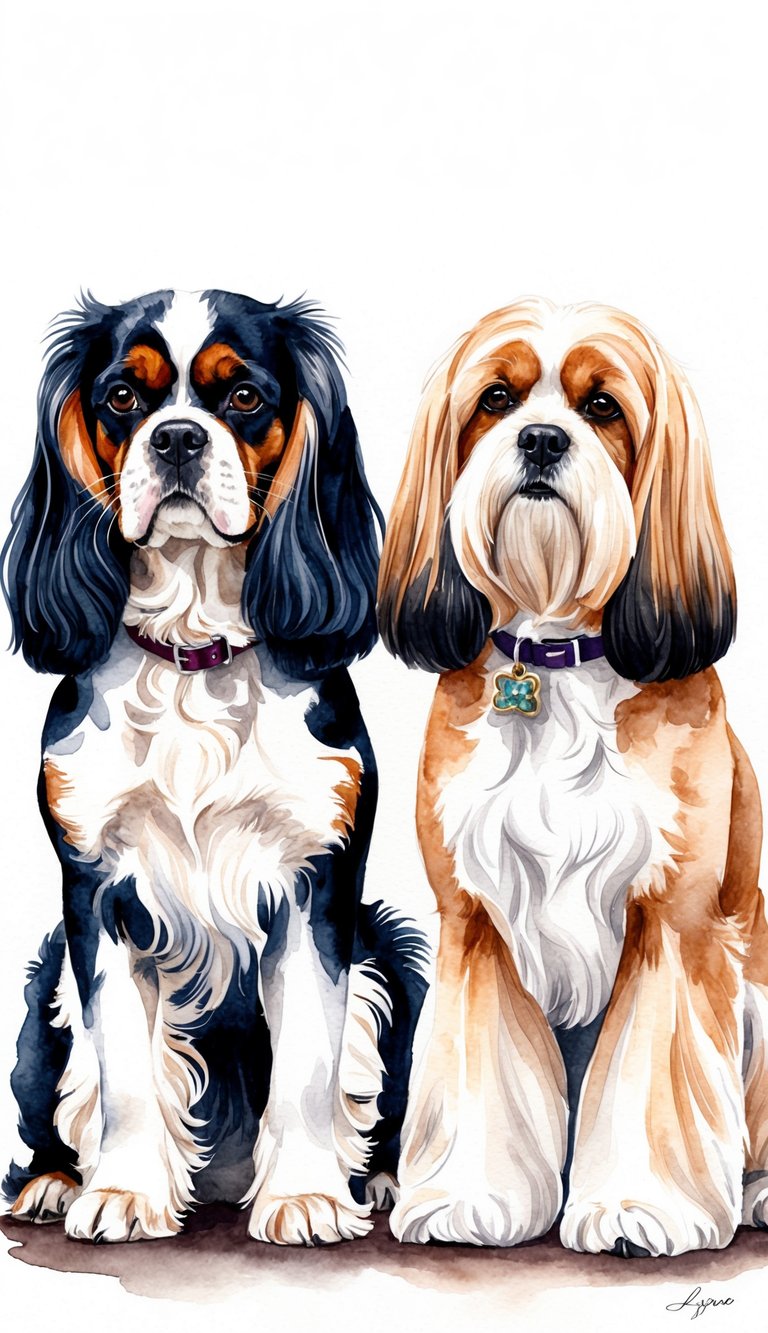
A dog’s background says a lot about how it acts. Both the Cavalier King Charles Spaniel and Lhasa Apso have long histories, but their roles and reputations are worlds apart.
Cavalier King Charles Spaniel Background
The Cavalier King Charles Spaniel hails from England and gets its name from King Charles II, who adored small spaniels. These dogs charmed royal courts in the 16th and 17th centuries.
You can see traits from old spaniels in the Cavalier’s gentle nature. The breed almost disappeared but made a comeback in the 20th century. Today, they’re known for being friendly and adaptable.
Lhasa Apso Historical Roots
The Lhasa Apso comes from Tibet and is way older than the Cavalier. Tibetan monks bred them to guard temples and homes.
Their thick coats helped them survive the cold mountain climate. Lhasas became treasured in Buddhist monasteries and symbolized good luck.
For centuries, you couldn’t find Lhasas outside Tibet. Only in the early 20th century did they start showing up elsewhere. Their loyalty and sharp senses made them top-notch watchdogs for monks.
Roles as Companion Dogs
Both breeds have always been companions, but their jobs looked different. Cavaliers were bred to keep royalty company and provide comfort.
They crave close contact and love being around people. Lhasa Apsos guarded sacred spots but were also cherished by Tibetan families.
Lhasas are more independent but still bond deeply with their owners. Expect loyalty and a watchful streak from them.
Physical Appearance
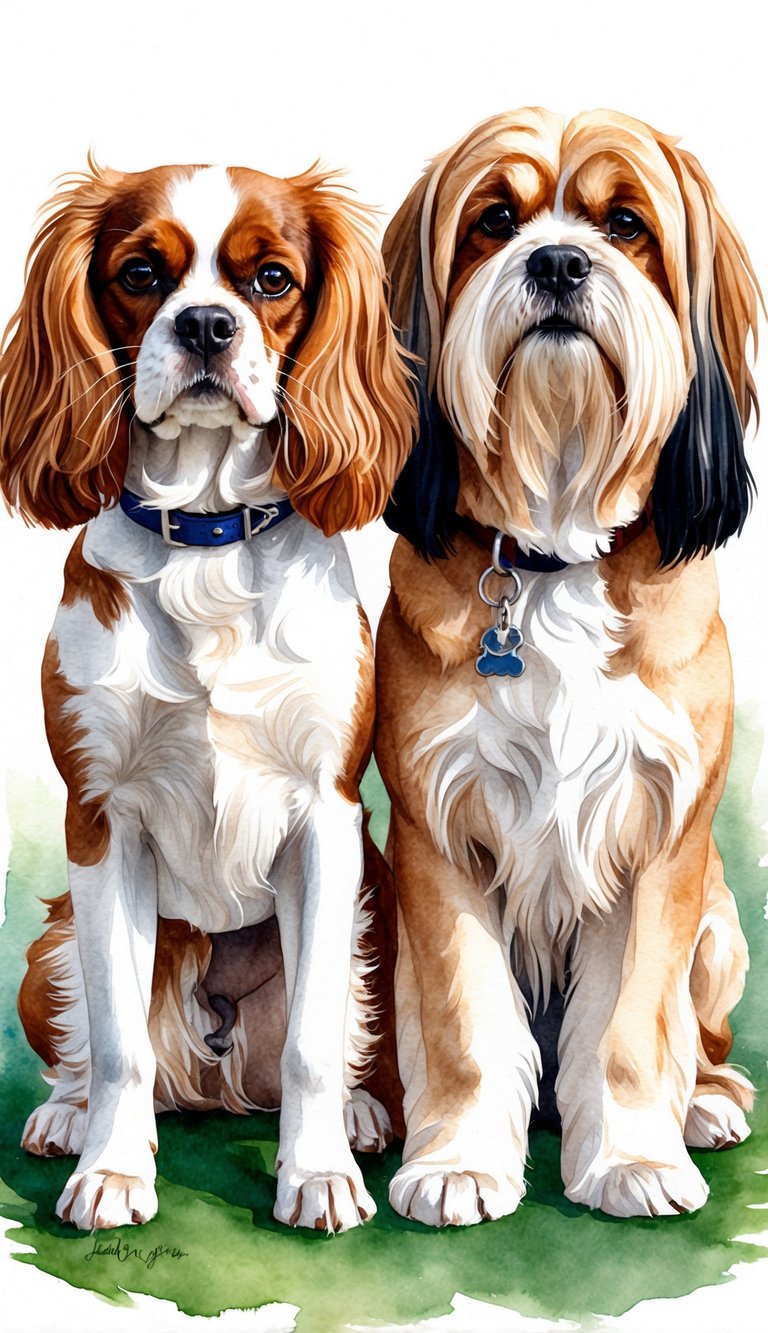
You’ll notice clear differences in size, coat, and face shape between these breeds. These details affect not just how they look, but the kind of care they’ll need.
Size and Weight Comparison
The Cavalier King Charles Spaniel is a lightweight, usually tipping the scales at 13 to 18 pounds. They stand about 12 to 13 inches tall at the shoulder.
The Lhasa Apso is also small but a bit heavier and more solid. Lhasas weigh around 12 to 18 pounds and stand 10 to 11 inches tall.
So, both are small, but the Cavalier’s taller and a bit sleeker, while the Lhasa’s shorter and stockier.
Distinctive Coat Features
The Cavalier King Charles Spaniel has a silky, medium-length single coat—it can be straight or gently wavy. Their hair is fine, so you’ll need to brush it regularly to keep tangles at bay. They shed a moderate amount.
The Lhasa Apso’s coat is a whole different story: long, dense, and double-layered. It’s straight, thick, and built for cold climates. Daily grooming is a must to avoid mats and knots.
If you want a dog that’s easy to brush, the Cavalier is your friend. If you don’t mind daily grooming, the Lhasa could work for you.
Color Variations
Cavaliers come in four classic colors:
- Blenheim (chestnut and white)
- Tricolor (black, white, and tan)
- Black & Tan
- Ruby (solid red)
Lhasa Apsos offer a bigger mix, including:
- Gold
- Cream
- Slate gray
- Dark brown
- Black
Many Lhasas have unique markings or color blends, so you’ll see lots of variety.
Brachycephalic Traits
The Cavalier King Charles Spaniel has a brachycephalic face—that’s a fancy way of saying a short skull and flat nose. It gives them big, soulful eyes, but can mean breathing or eye issues. You’ll want to keep an eye on that.
The Lhasa Apso has a longer snout and isn’t brachycephalic. Their face is more stretched out, so they’re less likely to have those breathing problems.
That difference matters when it comes to health and how much activity they can handle.
Temperament and Personality

There are clear differences in how these dogs show affection, interact with people and pets, and go about their day. Both can be loving companions, but their personalities might fit you differently.
Affectionate Qualities
The Cavalier King Charles Spaniel loves being close to people. They’re all about cuddles and will follow you from room to room.
The Lhasa Apso is affectionate too, but on its own terms. Sometimes they just want to chill alone.
Cavaliers are usually more openly needy for attention. Lhasas show love in quieter, more subtle ways.
Socialization with People and Pets
Cavaliers are just friendly—sometimes almost too friendly—with strangers and other animals. They handle new people and pets with ease.
Lhasas are more reserved and can be slow to warm up. They might need more time to trust new faces, whether human or animal.
If you want a social butterfly, the Cavalier’s a good bet. If you like a dog that’s a little more selective, the Lhasa fits that vibe.
Behavioral Differences
Cavaliers act gentle and want to please. They’re great for families who want a laid-back buddy.
Lhasas are more stubborn and independent. Training them takes a bit more persistence.
They’re alert and make good watchdogs. If you want a challenge, the Lhasa will keep you on your toes.
Exercise and Activity Level

Cavaliers and Lhasas have different energy levels and exercise needs. If you live in an apartment or have kids, this could matter more than you’d think.
Daily Exercise Needs
Your Cavalier King Charles Spaniel needs around 30 to 60 minutes of exercise every day. Walks, playtime, even a gentle jog—they’re up for it.
They love being active and joining family activities. The Lhasa Apso is more laid-back, happy with 20 to 30 minutes of daily exercise.
Short walks and some indoor play usually do the trick for a Lhasa. If you’re not super active, the Lhasa’s easier pace is probably a better match.
Suitability for Apartment Living
The Lhasa Apso easily adapts to apartment life thanks to its lower energy and quieter nature. No need for a big yard, but daily walks are still important.
The Cavalier King Charles Spaniel can live in an apartment too, but you’ll need to make sure they get enough exercise. Otherwise, they might get restless.
Training and Intelligence
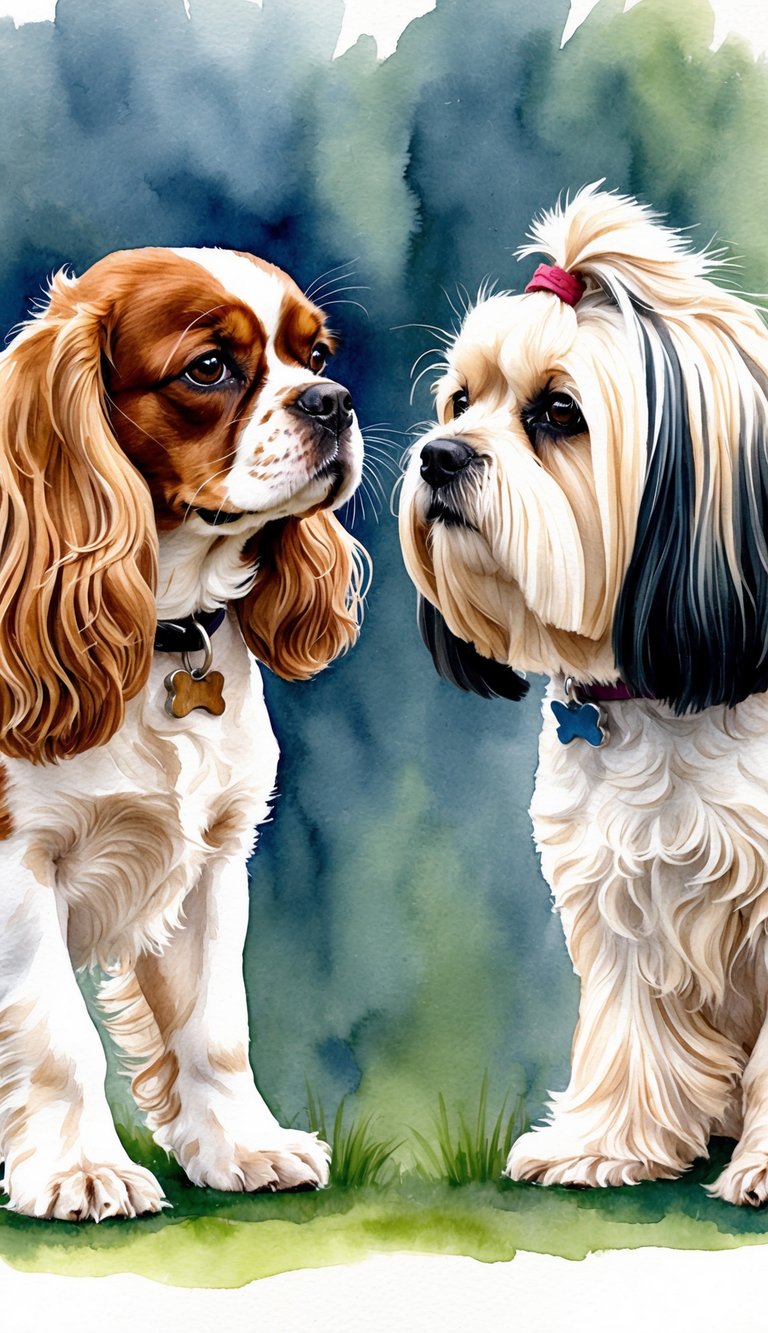
Training depends on how fast your dog learns and how they respond. These breeds both need socialization and steady guidance, but their learning styles are pretty different.
Trainability Differences
The Cavalier King Charles Spaniel is usually a breeze to train. They want to make you happy and respond well to treats and praise.
This breed loves working with you and benefits from early socialization. The Lhasa Apso is more independent and sometimes stubborn.
Training a Lhasa takes more patience and consistency. Early socialization helps manage their natural wariness with strangers.
Keep training sessions short and regular for both breeds. Treats and praise go a long way.
Learning Ability
Cavaliers often pick up commands quickly. You’ll probably see faster progress with house training and tricks if you stick with it.
Lhasas can take a bit longer to learn new things because they’re cautious by nature. Still, they’re smart and can learn well with repetition.
Both breeds need early socialization. It helps them feel comfortable in new situations and cuts down on shyness or aggression.
Health and Common Issues
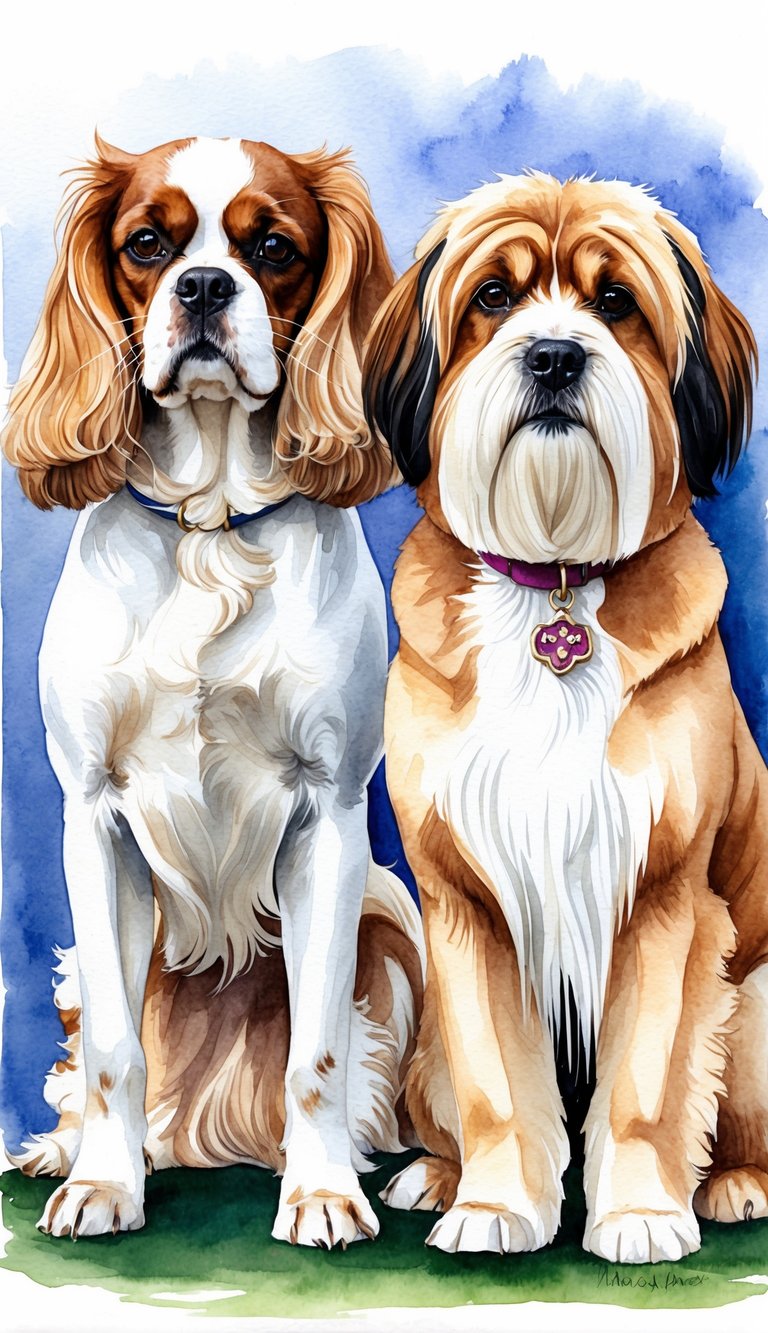
Both breeds have health issues you’ll want to keep an eye on. Knowing what to expect can help you catch problems early.
Breed-Specific Health Problems
Cavalier King Charles Spaniels often face heart problems, especially mitral valve disease. They’re also at risk for syringomyelia, which affects the spine.
Lhasa Apsos are more prone to eye issues like cataracts and dry eye. Both breeds can get hip dysplasia.
Regular vet visits and early screenings make a big difference. Watch for behavior changes or movement issues that could signal pain.
Mitral Valve Disease in Cavaliers
Mitral valve disease (MVD) hits about half of Cavaliers by age 5. The heart valve leaks, which leads to heart failure over time.
Symptoms include coughing, trouble breathing, and tiredness. Early diagnosis with heart scans helps manage it.
Your vet might recommend meds to slow it down and keep your dog comfortable. Regular heart check-ups are a must for Cavaliers.
Ear Infections in Both Breeds
Both Cavaliers and Lhasas have long, floppy ears that can trap moisture and cause infections. Clean their ears regularly and check for redness, bad smells, or discharge.
Ear infections are common and can make your dog miserable. If you notice head shaking or lots of scratching, see your vet to nip it in the bud.
Life Expectancy and Longevity
Cavalier King Charles Spaniels usually live around 10 to 14 years. Lhasa Apsos often reach 12 to 15 years, sometimes even more.
If you pay attention to breed-specific health risks, your dog’s chances of a longer, healthier life go up. Early care makes a real difference in avoiding serious problems.
Grooming and Maintenance
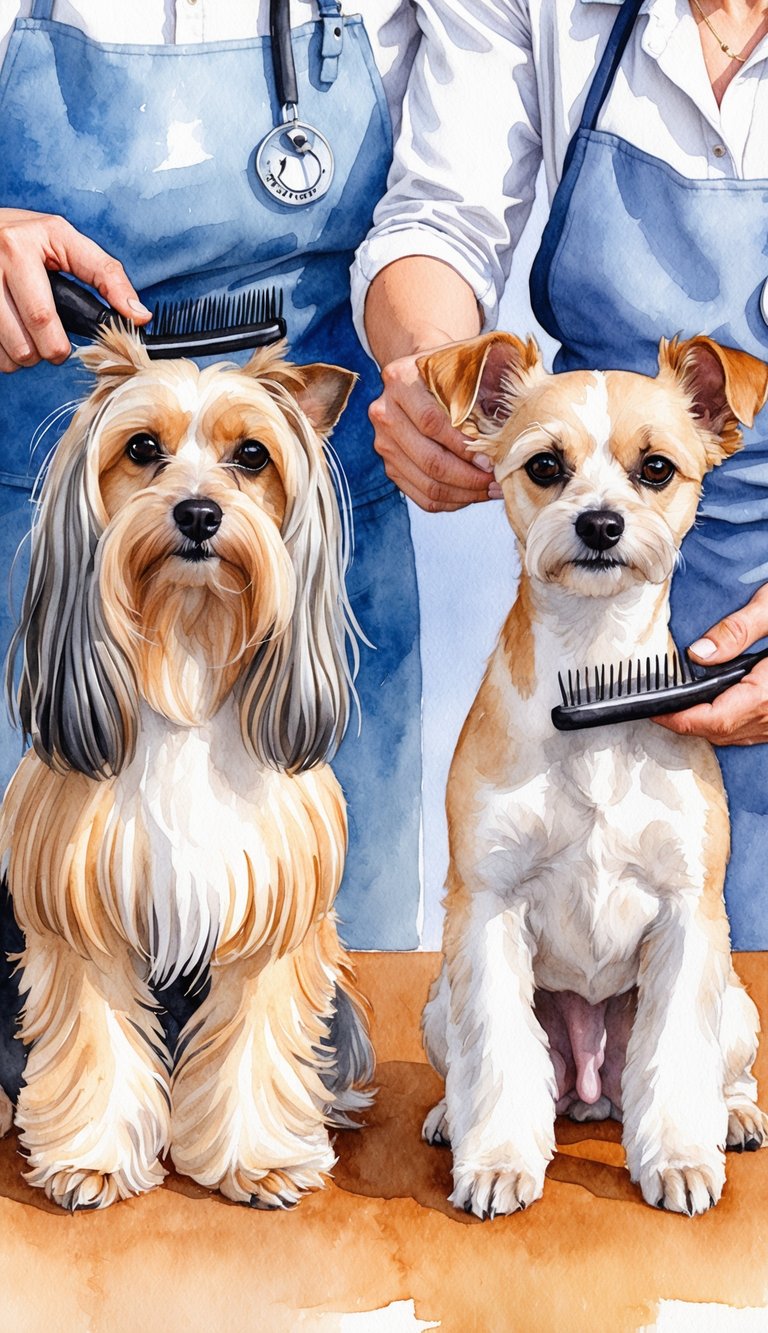
Both breeds need regular grooming, but their routines aren’t the same. Brushing, bathing, and handling shedding are part of keeping these dogs comfortable.
Coat Care Requirements
The Cavalier King Charles Spaniel has a medium-length, silky coat. You’ll want to brush it three or four times a week to prevent tangles, especially behind the ears and on the chest.
Trim around the paws and ears now and then to keep things tidy. It doesn’t take long, but it makes a difference.
The Lhasa Apso’s coat is a different story—long, dense, and double-layered. Daily brushing is pretty much a must to stop mats from taking over.
Many people trim their Lhasa Apso or keep the hair short for easier upkeep. It’s honestly a relief if you’re not into daily detangling.
Both breeds do best with monthly baths. Use a gentle dog shampoo and dry their coats well to avoid skin issues.
Hypoallergenic Qualities
The Lhasa Apso is often called hypoallergenic. It sheds less and its coat holds onto loose hair, so there’s less fur floating around.
If you’ve got allergies, this breed might be easier to live with. The Cavalier King Charles Spaniel sheds more and spreads dander, which can be tough for sensitive folks.
Frequent cleaning and grooming help with allergens for both breeds, but the Lhasa Apso is usually the safer bet.
Shedding and Cleaning
Cavalier King Charles Spaniels shed steadily all year, with a bit more in spring and fall. You’ll probably be vacuuming and brushing pretty often to keep up with the fur.
Lhasa Apsos barely shed, but their long hair traps all sorts of dirt and debris. Daily brushing and regular baths keep things under control.
Both breeds need ear cleaning and nail trims to stay healthy. Keep an eye out for skin problems while you groom—catching them early is way easier.
Compatibility with Families and Other Pets
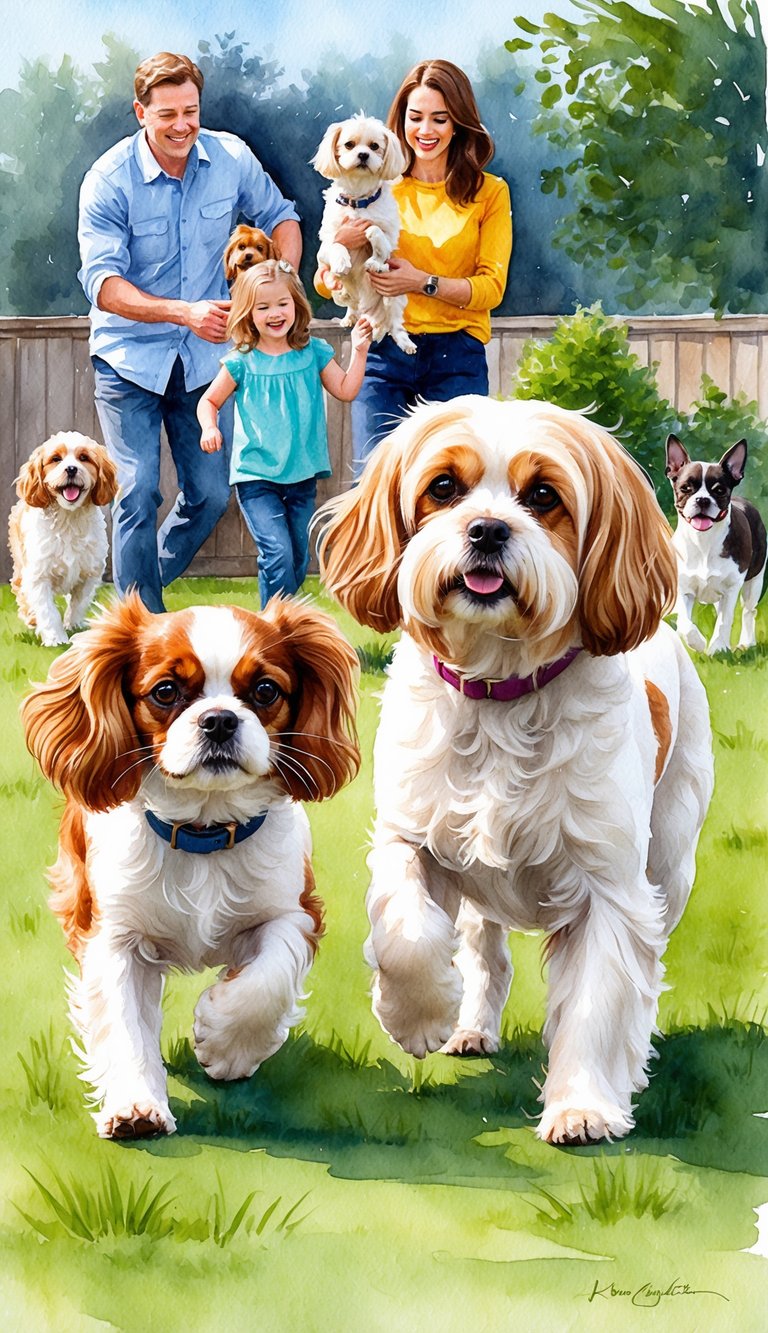
Both breeds can fit into family life, but their needs and personalities aren’t identical. How they act with kids and other pets can help you decide which one’s right for you.
Socialization really matters for both breeds. It shapes how they handle new people and animals.
Suitability for Households with Children
The Cavalier King Charles Spaniel is gentle and friendly with children. It usually enjoys playtime and can deal with the noise and chaos of family life.
Still, it’s a small, sensitive dog. Make sure young kids are careful so nobody gets hurt.
Lhasas are good with kids, but they’re a bit more reserved. They might not love rough play and sometimes guard their space.
Early socialization helps Lhasas adjust to energetic kids, but they often do better with calmer, older children.
Interactions with Other Dogs
Cavalier King Charles Spaniels tend to get along with other dogs. Their outgoing personalities make new introductions less stressful.
Still, introduce them slowly to avoid overwhelming anyone. Every dog’s different.
Lhasas can be territorial and sometimes act dominant with unfamiliar dogs. They need socialization early on, and you should watch for signs of stress or grumpiness.
They usually do better with dogs they know well rather than strangers.
Breed Popularity and Alternatives
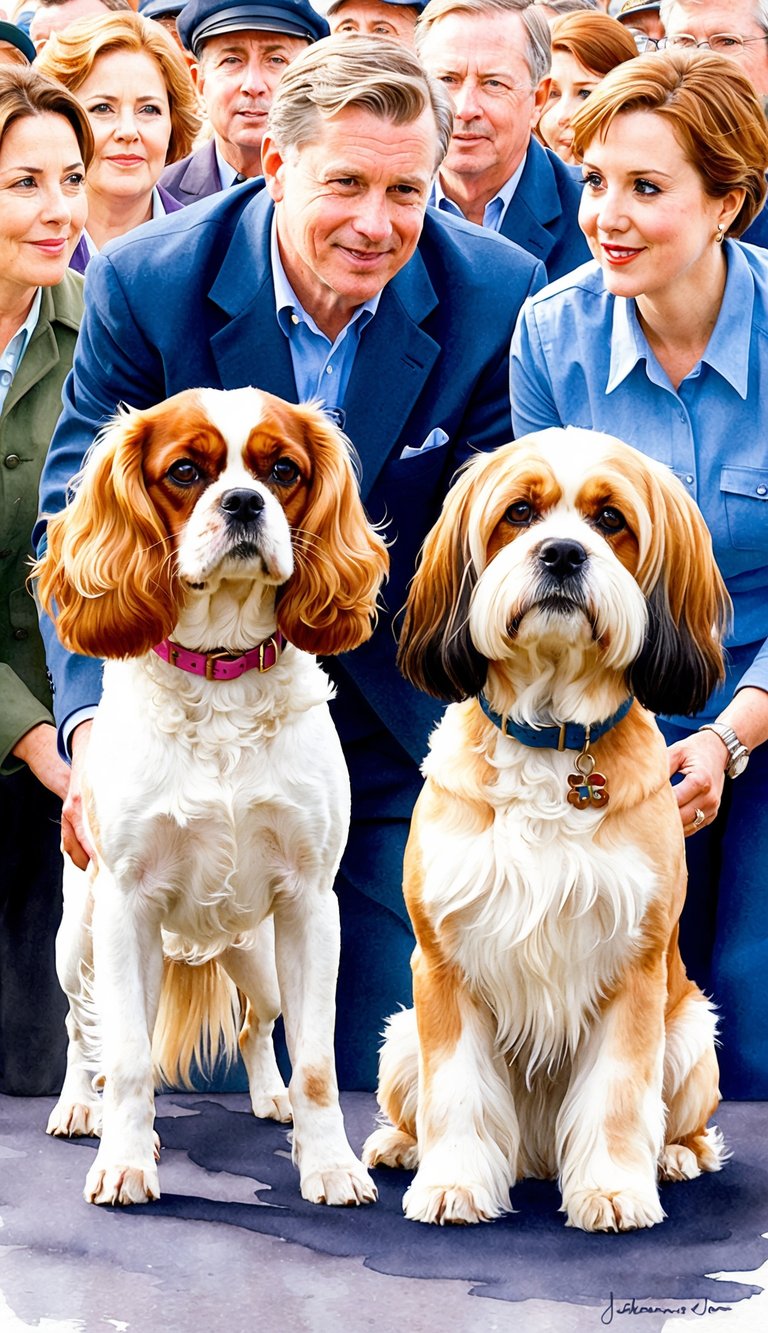
Both breeds have their fans, but their popularity depends on where you live and your lifestyle. If neither breed feels like a perfect fit, there are plenty of similar dogs out there.
Similar Dog Breeds
If you’re drawn to the Cavalier King Charles Spaniel, maybe check out the English Cocker Spaniel or American Cocker Spaniel. Both have a friendly nature and moderate energy.
If you love the Lhasa Apso’s unique coat, the Shih Tzu and Tibetan Spaniel are worth considering. They also have long hair and need regular grooming.
For small, friendly, and hypoallergenic options, the Bichon Frise or Maltese are great. The Papillon brings a lively personality and is easy to train.
If you want something a bit different, the Brussels Griffon offers a quirky look and moderate exercise needs.
Comparisons to Other Small Breeds
When you stack up the Cavalier and Lhasa Apso against popular small breeds like the French Bulldog, Pug, or Boston Terrier, their care needs really stand apart. Bulldogs and Pugs? They don’t ask for much grooming, but you do have to watch out for their breathing problems.
If you’re after a super active small dog, maybe the Miniature Schnauzer or Jack Russell Terrier is more your speed. These dogs crave exercise and mental challenges, way more than the Lhasa Apso ever would.
A breed like the Toy Poodle? That one can keep up with the Cavalier King Charles in terms of brains, but honestly, you’ll spend more time grooming.
Thinking about a dog with a big personality in a tiny body? The Yorkshire Terrier or Dachshund might be just right. They need steady care, sure, but you get a whole lot of character in return.

